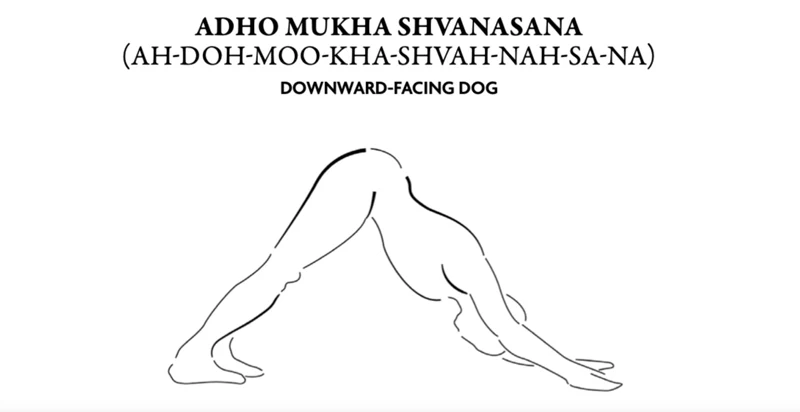![[feature] Boost Your Immunity by Doing These 3 Yoga Stretches Every Day](https://blogger.googleusercontent.com/img/a/AVvXsEgKVdrKg2RTz7wSZeSzOFqcx579ZNLBnEpY7AKMV6N6CnNMNXADEDoWyLihaKJITBw7RctwbTu0G6cggpuRXl0pHlccxwHBqZuHhp8-VkYDTazRL-WTH_j6fpqHBORfSMUHK73R4STYHBajd7wQ3GKm_AIc74TaEYkI8gr_QkzgOeAEtGcKR0tLJXe0=s16000-rw) |
| © Getty Images |
We can all agree that doing a little stretching every day helps us feel relaxed. Deep breaths and gentle movements are great tools for reducing any sort of stress. Plus, yoga stretches work as whole-body therapy to reduce aches and pains. But did you know that this simple activity can also boost your immune health?
Certified yoga instructor Melanie Salvatore August discusses this concept in depth in her book Yoga to Support Immunity. According to Salvatore-August, yoga poses increase oxygenation and blood circulation, support expansion of the diaphragm and lungs, decrease inflammation, and aid in lymphatic drainage. They also improve digestion, breathing, and brain function. By optimizing various systems and organs in the body, stretching ultimately boosts the immune system.
Research supports this idea, as exercise can help flush bacteria out of the lungs and airways. It can also help circulate antibodies and white blood cells through the body more quickly, so they detect illness more rapidly. Better yet, lowering stress with a relaxing activity like yoga may help in its own right. Studies show that lower levels of stress hormones can reduce the risk of illness.
Don’t have time for a whole flow? Performing just a few yoga stretches each day still has benefits. Salvatore-August shared three of her top poses for immunity with First for Women.
Downward-Facing Dog
 |
| © Sebastian Allapat |
 |
| © Sebastian Allapat |
The first of Salvatore-August’s three yoga stretches is a classic. “Start the pose with the knees bent and heels lifted to facilitate the hips moving fully up and back,” she says. “[This] creates traction for the entire spinal column.”
According to Salvatore-August, downward-facing dog stretches the back of the legs, calves, hips, buttocks, spine, shoulders, arms, and hands. It also reduces spinal compression caused by gravity and massages the internal organs and abdomen. In doing so, it promotes better digestion and better circulation.
Feel free to practice this move at any time of day. If you decide to embark on a full yoga session, practice downward-facing dog between other poses to calm and reset your system.
Struggling in this pose? Salvatore-August has several tips. “Bend the knees if there is any strain in the low back,” she says. “Turn your hands slightly out and wider than shoulder-width if your shoulders and neck are right.” You can also practice this pose on your forearms instead if you have pain in your wrists. Salvatore-August notes that you should avoid this pose if you have a hiatal hernia, high or low blood pressure, history of stroke, glaucoma, or a detached retina.
Read More:
Child’s Pose
 |
| © Sebastian Allapat |
If you want a pose that feels more like resting than stretching, child’s pose is for you. “This is a pose that is dedicated to non-doing,” says Salvatore-August. “This pose is like salt and pepper. It can be added to any yoga meal when needed to bring the system back to balance.”
To enter this pose, start on all fours. Exhale as you draw your hips back toward your heels. “Separate your knees slightly and draw the big toes together to touch,” she says. “Inhale to lengthen the sides of the torso. Exhale to relax the head, shoulders, and hips toward the floor. Breathe in and out through the nose, expanding the low belly and relaxing the entire system.”
Though child’s pose doesn’t require much active effort, there are a few things to keep in mind. “When the thighs are pressed together, it creates an abdominal massage, supporting elimination and toning the diaphragm,” Salvatore-August explains. “When the legs are slightly apart, it releases the abdominals and diaphragm.” Both versions of the pose stretch the front of the legs, hips, buttocks, lower back, shoulders, and neck.
Salvatore-August adds that the pose can create pressure on the knees. If you need to alleviate this pressure, place a rolled bath towel between your buttocks and calves. If your head doesn’t comfortably rest on the floor, rest it on your forearms or a yoga block instead. Perform child’s pose with your thighs separated if you are pregnant or feel strain on your diaphragm or throat.
Bridge Pose
 |
| © Sebastian Allapat |
The bridge pose is an excellent stretch to promote better breathing. Salvatore-August describes it as “a gateway pose that opens the chest and creates much needed mobility for many of us in the upper back.”
To perform this stretch, lie down on your back with your knees bent, feet on the floor, and heels directly under your knees. “Align the feet and knees hip-width apart and keep them in this alignment throughout the posture,” she says. Then, extend your arms alongside your torso with the palms facing down.
“Lengthen through the natural curves of the spine and support the neck curve by drawing the upper back gently in and broadening the chest,” she explains. Next, push up through the hips and chest, using your feet, hands, back of the shoulders, and head to maintain your balance. After breathing deeply for about five breaths, gently lower your hips down to the floor and relax.
Salvatore-August says that this pose stretches the legs, abdomen, spine, chest, lungs, and shoulders. It also creates space in the abdomen. These benefits help to improve digestion and lung capacity.
If you need more support, place a yoga block between your thighs to assist your core and spinal column. Avoid turning your head in this pose to reduce tension and strain. If you have abdominal issues, spinal disc issues, or high blood pressure, Salvatore-August says to avoid this pose.
Complete these stretches whenever your body is feeling tight, or you are feeling stressed. With consistency and practice, these simple movements can help you boost your immunity this season.
See more at First For Women























